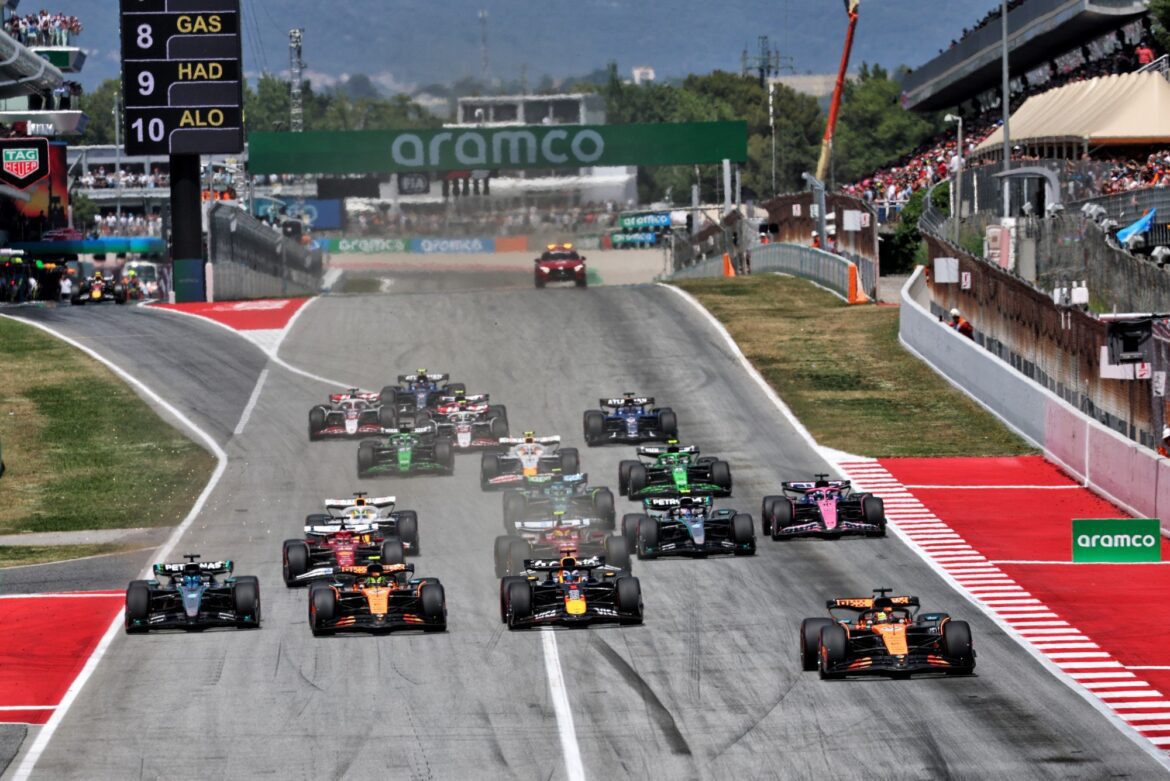New FIA Technical Directive on Flexible Front Wings: An Overview of Its Impact in F1
The recent technical directive from the FIA regarding the use of flexible front wings in Formula 1 stirred considerable anticipation ahead of the Spanish Grand Prix. However, following the race in Barcelona, the general sentiment among leading teams was one of disappointment due to the directive’s limited effects. Mercedes team principal Toto Wolff expressed his views on the matter, stating that the expected breakthrough didn’t materialize. According to Wolff, “Sometimes we try to convince ourselves that there is a ‘silver bullet’ in Formula 1 that will solve everything. But that is not the case.”
Understanding the Technical Directive
This new regulation was intended to limit the flexibility of front wings under load, which had been viewed as a potential technical advantage for teams like McLaren. The idea was that by restricting this flexibility, teams would have to rely more on other aspects of vehicle performance, potentially leveling the playing field. Yet, after the qualifying session in Barcelona, where McLaren secured a front-row lockout, it became clear that the impact of the changes was minimal. The British team went on to achieve a one-two finish in the race, reinforcing the notion that the technical landscape remained largely unchanged.
Reactions from Team Principals
Frederic Vasseur, head of Ferrari, acknowledged that his team had high hopes regarding how the rule might alter the balance of forces in their car. “We have been working on this for a long time, and this could have been a game-changer for everyone because we don’t know how the new rule will affect each team,” he stated. However, with Charles Leclerc finishing third and Lewis Hamilton in sixth, Ferrari recognized the need for further investigation and answers back at their headquarters in Maranello.
Vasseur continued, “I don’t think we can use Monaco as a benchmark. But if we look at the race around lap 40, we were five seconds behind Norris. That pace was significantly better than in Miami, for example, when we were overtaken. I don’t want to attribute this solely to the front wing. The context of each race is unique.”
McLaren’s Perspective
Andrea Stella, the team principal of McLaren, also downplayed the repercussions of the new directive. He indicated that the tests conducted by the team had already suggested that any changes would be nearly imperceptible. “We believed the impact would be relatively small because, when we analyzed the numbers regarding this change, the values were low. We tested this wing in Imola, and if we hadn’t told Lando (Norris) that it was a different component, he wouldn’t have noticed. In simulations, the difference was practically zero,” he concluded.
The Reality of the Situation
As a result, many perceived the excitement surrounding the new directive as a false alarm. While the regulation remains in place, the Spanish Grand Prix confirmed that competitiveness among F1 teams still hinges on more intricate and less miraculous factors than mere technical tweaks.
The Broader Implications of the Directive
The FIA’s decision to implement regulations regarding flexible front wings reflects an ongoing effort to enhance the sport’s integrity and maintain a level playing field. By addressing such technical elements, the governing body aims to ensure that success in Formula 1 is determined by engineering excellence, strategic decision-making, and driving skill rather than potential loopholes in the regulations.
The debates and discussions that have emerged post-race highlight a crucial aspect of F1: the pursuit of innovation and performance is relentless, and teams are continuously adapting to the shifting landscape of rules and regulations. The complexities of car development mean that even small changes can have significant repercussions, but not always in the way teams anticipate.
The Competitive Landscape of Formula 1
The competitive environment in Formula 1 is characterized by its dynamic nature. Each team brings its unique approach to car design, strategy, and technology. For instance, while McLaren celebrated its successes in Barcelona, teams like Ferrari and Mercedes are grappling with the implications of new regulations and how they affect performance on the track.
This ongoing battle for supremacy motivates teams to innovate constantly. The prospect of new regulations can spark creativity and drive teams to discover novel solutions that push the boundaries of technology. The challenge lies in effectively interpreting and responding to these regulations while maintaining a competitive edge.
Lessons Learned from the Spanish GP
The Spanish Grand Prix served as a reminder of the unpredictable nature of racing. Despite the anticipation surrounding the FIA’s directive, the outcome illustrated that factors beyond technical regulations often dictate the race. Elements such as tire strategy, driver skill, and real-time decision-making all play critical roles in determining the final results.
Moreover, the reactions from team principals following the race underscore the complexity of the sport. While some teams may have hoped for a game-changing impact from the new regulations, the reality is that F1 is a multi-faceted arena where success is built on numerous interconnected elements.
As teams head into future races, the lessons from Barcelona will undoubtedly influence their strategies and preparations. The ability to adapt quickly to new information and evolving circumstances is essential for success in this fast-paced environment.
Conclusion
In summary, the FIA’s new technical directive on flexible front wings brought with it a wave of anticipation and discussions among teams and fans alike. However, the subsequent results from the Spanish Grand Prix highlighted the limitations of such regulations in altering the competitive landscape of Formula 1. As teams continue to navigate the complexities of the sport, the interplay between technology, strategy, and driver performance remains at the forefront of their efforts to achieve success on the track. The journey through this season will undoubtedly reveal more about the impact of technical changes and the relentless pursuit of excellence in Formula 1.
